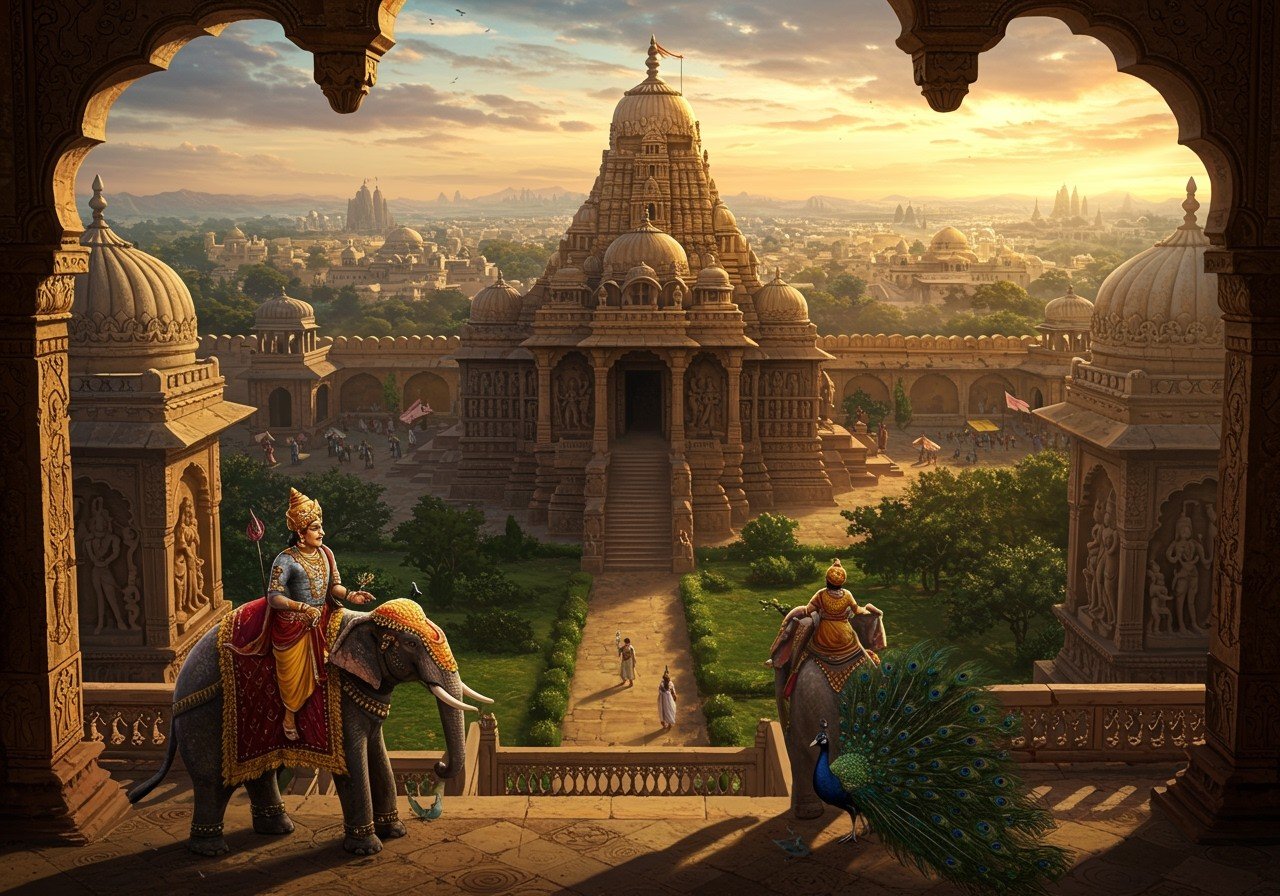
The Vakataka Dynasty stands as a prominent kingdom in the history of Central India, ruling from the 3rd century to the 5th century CE. This dynasty, a contemporary of the Gupta Empire, held significant influence over the Deccan region for over two and a half centuries. This blog delves into the location, significance, geographical reach, cultural impact, and historical achievements of the Vakataka Dynasty. Understanding their story offers valuable insights into the development of India’s cultural and political landscape.
Historical Background
Founded by Vindhyashakti in the late 3rd century CE, the Vakataka Dynasty left a lasting legacy through contributions to art, architecture, and literature. Their reign marked a period of prosperity and cultural flourishing in Central India.
- Founders: Vindhyashakti laid the foundation for the dynasty’s rise to prominence. His successors built upon this foundation, expanding the kingdom’s reach and influence.
- Key Rulers: Prominent rulers like Pravarasena I and Harishena (around 480 CE) shaped the dynasty’s trajectory through strategic alliances and military campaigns. Their reigns witnessed both territorial expansion and cultural growth.
- Political Climate: The political landscape of Central India during the Vakataka period involved complex alliances and conflicts with neighboring kingdoms. Navigating these political dynamics was crucial for the dynasty’s survival and expansion.
- Religion: The Vakatakas played a crucial role in the propagation of Vedic religions and the spread of Hinduism across their territories. Their patronage extended to various religious institutions and practices.
- Socio-Economic Conditions: The Vakataka rule brought about a period of economic prosperity and social stability. Trade flourished, agriculture thrived, and the arts and sciences received royal patronage.
- End of Dynasty: While the dynasty’s formal rule ended in the 5th century CE, its impact on the region’s culture, religion, and political structure continued to resonate for centuries.
Geographical Spread
The Vakataka Dynasty’s dominion extended over a vast area in Central India, encompassing regions of modern-day Maharashtra, Madhya Pradesh, and parts of Chhattisgarh. Their strategic location played a vital role in their political and economic dominance.
- Boundaries: The Vakataka kingdom stretched across a significant portion of Central India, encompassing diverse landscapes and populations. Their influence extended from northern Maharashtra and Vidarbha (Berar) across the Deccan region.
- Central Location: Their central position in the Indian subcontinent was crucial for controlling vital trade routes, facilitating both economic growth and cultural exchange.
- Landscapes: The Vakataka territory encompassed a variety of geographical features, including rivers, mountains, and forests. This diverse landscape supported a range of economic activities.
- Key Cities: Cities like Nandivardhana and Pravarapura served as important administrative and cultural centers within the Vakataka kingdom. They became hubs of learning, art, and religious practices.
- Trade Routes: Important trade routes crisscrossed the Vakataka territories, contributing to the kingdom’s economic prosperity and facilitating interaction with other regions.
- Strategic Advantages: The kingdom’s strategic location provided advantages in terms of defense and political control over surrounding areas.
- Agricultural Activities: The fertile lands within the Vakataka kingdom supported a thriving agricultural sector, which formed the backbone of the economy.
Cultural Contributions
The Vakataka Dynasty is renowned for its rich cultural contributions, particularly in the realms of art, architecture, and literature. Their patronage of the arts led to a flourishing of creative expression.
- Architecture: The Ajanta Caves, a UNESCO World Heritage site, stand as a testament to the Vakatakas’ architectural prowess and artistic vision. These rock-cut cave monuments showcase exquisite paintings and sculptures, reflecting the dynasty’s patronage of Buddhist art.
- Literature: The Vakataka period witnessed significant contributions to Sanskrit literature, including poetry and scholarly works. Royal patronage encouraged literary pursuits and the development of new styles.
- Art: Vakataka art, particularly the frescoes of the Ajanta Caves, had a profound influence on subsequent Indian art forms. The vibrant colors, detailed narratives, and expressive figures continue to inspire artists and scholars today.
- Religion: The Vakatakas extended their patronage to both Vedic and Buddhist traditions. This religious tolerance fostered a vibrant spiritual landscape and encouraged the development of diverse religious practices.
- Role of Women: Women played important roles in Vakataka society, with some, like Queen Prabhavatigupta, exercising considerable political and cultural influence. Their contributions extended to religious patronage and artistic endeavors.
- Education: The Vakatakas supported the establishment of learning centers and educational institutions, contributing to the intellectual growth of the region.
- Cultural Exchanges: Interactions with neighboring kingdoms led to cultural exchanges, enriching the artistic and intellectual traditions of the Vakataka kingdom.
Poojn.in: Connecting You with India’s Rich Cultural Heritage
Poojn.in, India’s leading online store for cultural and religious goods, offers a wide selection of products that resonate with the rich traditions of the Vakataka era. Explore our collection of authentic puja items, handcrafted statues, and spiritual accessories, and connect with the heritage of ancient India.
- Brass Statues: Discover beautifully crafted brass statues of deities, reminiscent of the artistic traditions prevalent during the Vakataka period.
- Clay Pots and Ritual Items: Explore our range of clay pots and other ritual items, similar to those used in ancient ceremonies and practices.
- Explore Ancient Temples: Delve deeper into the history of ancient temples in Maharashtra, many of which bear influences from the Vakataka period.
Conclusion
The Vakataka Dynasty holds a significant place in the history of Central India. Their contributions to art, architecture, literature, and religion shaped the cultural landscape of the region. Exploring their story provides a glimpse into a fascinating chapter of India’s past, highlighting the power, influence, and cultural achievements of this remarkable kingdom.


